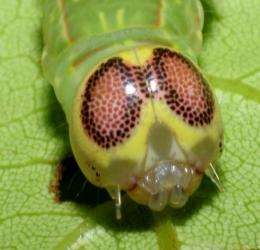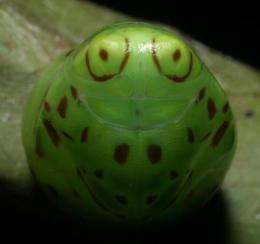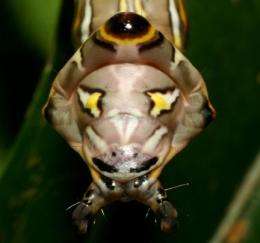Penn biologist says fake eyes have enabled tropical caterpillars to thrive

Thirty-two years ago, Penn biologist Daniel Janzen broke some ribs falling into a ravine in the Area de Conservacion Guanacaste in northwestern Costa Rica. Sore and unable to leave his chair beneath a 25-watt light bulb deep in the forest, Janzen began to study the moths attracted to the dim light. What resulted was more than three decades of work collecting, photographing and raising caterpillars into adults, then identifying each of the species, half of which had never been described before. The operation continues to this day, 365 days a year, with the help of 33 trained Costa Rican assistants.
The team’s most recent report, published this week in the Proceedings of the National Academy of Sciences, explains why hundreds of species of tropical caterpillars display a fascinating variety of eye-like and face-like color patterns—the kinds of designs that scare off insect-eating birds and make a harmless and vulnerable caterpillar look like a poisonous snake.
Having seen more of these species than almost anyone in the world, Janzen believes the cause of this natural defense is not fully explained by traditional theories.

Instead, he says this decorative defense “constitutes a huge ‘mimicry complex’ that is evolutionarily generated and sustained by the survival behavior of a large array of potential predators.”
His theory differs from prior explanations in that it now appears that predatory birds have an innate sense to flee from eyes and faces as fast as possible, rather than pausing to learn if the animal is a predator. The bird that must learn to avoid an eye, says Janzen, is not long for this world.

Janzen adds that almost all caterpillars that live in this Central American region are visually “mimetic” of something. The reason, he says, is directly tied to the caterpillars’ survival: nature has hardwired predatory birds to be skittish and flee at the suggestion of predatory markings, which in turn has allowed caterpillars in that area to thrive.
Provided by Pennsylvania State University

















